Walking through the woods is such a pleasure and rarely, if ever, a disappointment.Even now, in winter, when by all appearances, the forest is asleep in its shroud of brown and gray, there is always something offered up when you take the time to notice.
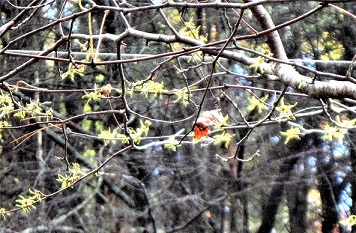
Leading out of our garden, there is a well worn path that follows a creek and winds its way down into the blueberry patch. For years, we have traveled this mossy path without ever noticing that the green shrub/trees growing along side of its banks were, indeed, a large and mature stand of Witch Hazel. Hamamelis virginiana, commonly known as Witch Hazel, blossoms in early winter with small, yellow flowers up and down its limbs. And so it was that day, as we strolled down the path and noticed these thread like blossoms at our feet. Looking up we see a tall shrub with many more blossoms. First one, then we see another, and another until at least 10-15 trees or shrubs were counted. That's exciting stuff for people who enjoy foraging for wild foods and herbs.
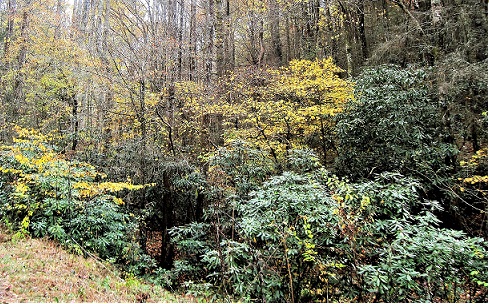
The settlers to North America adopted the use of Witch Hazel, as a medicinal plant, from the Native Americans. And that is our plan, as we return later to harvest some of the twigs and bark and begin the process of making some Witch Hazel tonic for ourselves. We first cut some small twigs that can be used, as is, with bark intact. Then a few small limbs are taken. These will require the bark and cambium layer removed to expose the wood itself. It is the bark that we are seeking for the tonic. When foraging in the wild, it is critical to take only what will be needed, and to do so in a manner that insures a healthy plant, and crop, in the future. Whether by greed or ignorance, indiscriminate cutting, chopping, and digging of our native plants has caused many of them to become rare and/or extinct. Think ginseng.
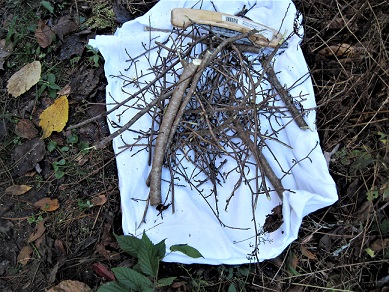
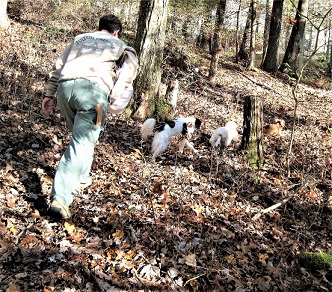
Back home the bark and twigs are covered in a large pot of water and brought to a boil, then simmered for thirty minutes. Then the heat is turned off and the pot is left to sit all night. In the morning we strain out the twigs and bark and add grain alcohol or vodka. Without the alcohol the Witch Hazel is only good for a few weeks if kept refrigerated. With alcohol added it should be good for a year or more. But with all the uses for the tonic it shouldn’t need to last that long.
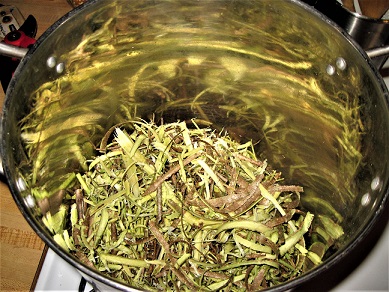
Here are just some of the uses:
Skin toner
Relieve the burn and itch of insect bites
Ease sunburn
Clean wounds
Reduce varicose veins
Help heal diaper rash
Diminish blemishes

